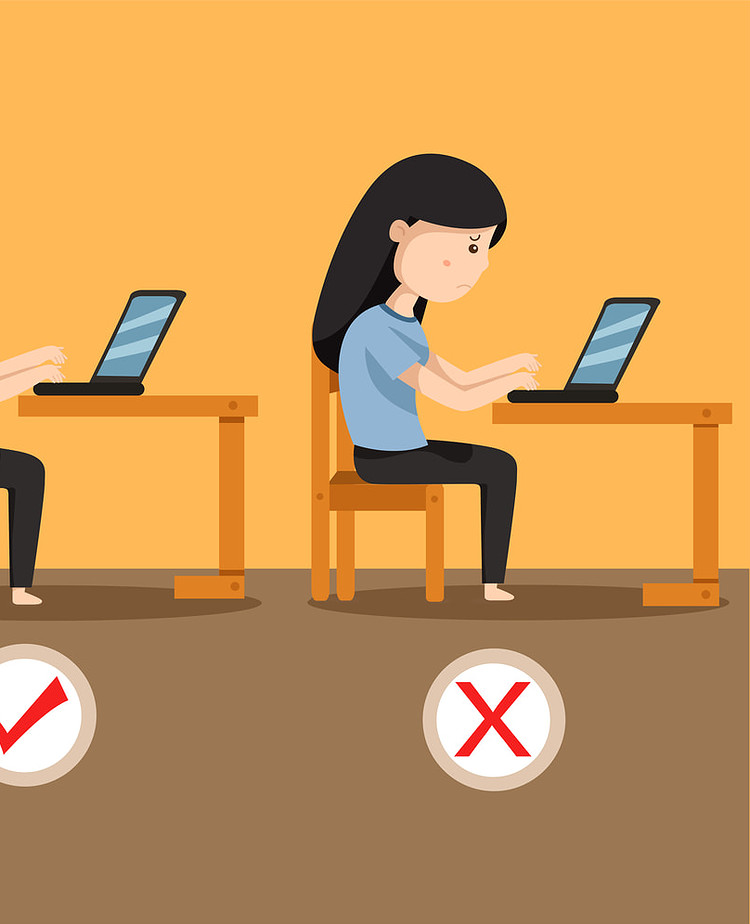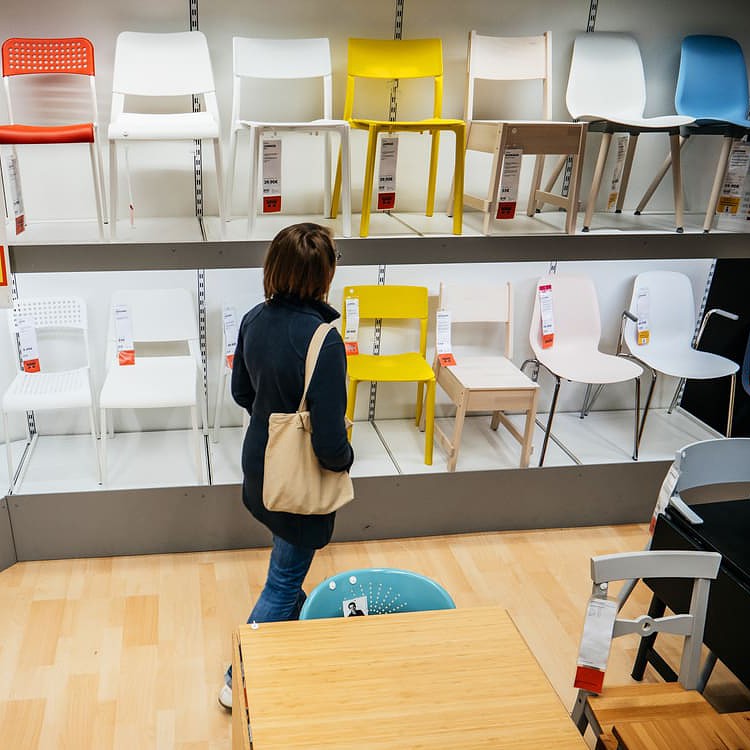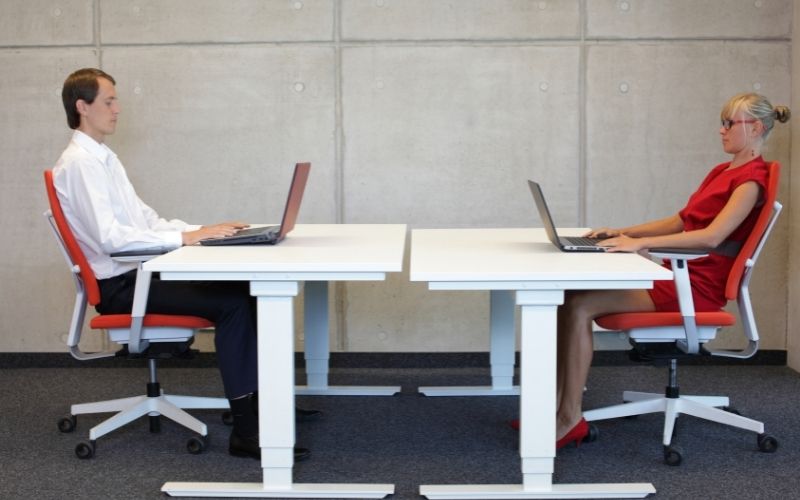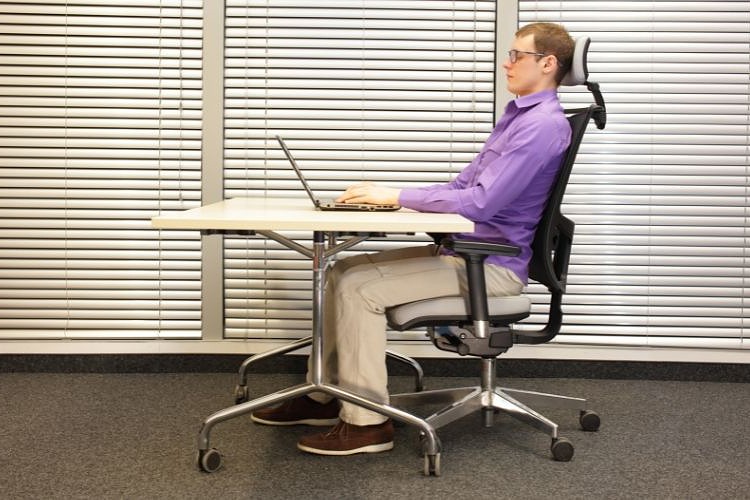Whether we’re managing back pain or working to prevent it, our first instinct is to cast a suspicious eye at our chairs — with good reason. According to Healthline, incorrect posture while sitting can contribute to backache. So, which chairs are the best for maintaining comfort?
Honestly, it’s not so much the type of chair you’re using as it is how you’re sitting in it and for how long. Wooden chairs are not the best for your posture because they don’t offer lumbar support (or armrests), and are generally rigid, defying the natural curve of our spines.
That said, there are ways that you can get your wooden chairs to work for you, so don’t throw them out just yet. Here’s everything you need to know about chairs, ergonomics, and how your choices could be affecting your health and quality of life.
What Is an Ergonomic Chair and Why Does it Matter? An ergonomic chair is built to support your body in the healthiest way possible, taking things like the shape of your spine, how you move, correct posture, and healthy circulation into consideration.
Ergonomic chairs are important because they can improve, perhaps even prevent, back pain, muscle strain, and other aches and conditions. Don’t get me wrong though. You’ll still have to learn to sit correctly to reap their benefits, but they are undoubtedly a step in the right direction — for those managing back pain, and those looking to avert it.
Table of Contents
Is a Wooden Chair Good for Back Pain?

Standard wooden chairs are the furthest thing from ergonomic, so when it comes to back pain, you’ll want to avoid them. They’re meant to be stable, not comfortable, and this causes two major issues:
- Wooden chairs don’t follow the curve of your spine and therefore place pressure on your lower back.
- They enforce static posture, exacerbating muscle fatigue, strain, and impaired circulation.
There are other problems with wooden chairs as well. For one, they’re hard, so if you don’t have some cushioning, they’ll quickly become uncomfortable. Because of this, you’ll likely shift to awkward positioning and wreck your posture, for example by slouching.
So, no. Wooden chairs are not great for your back or for managing back pain. On the contrary, if you sit in them for hours, they’re likely the cause of it. But there’s hope yet. Taking care of how you sit is just as important as what you choose to sit on.
How to Make a Wooden Chair Comfortable?

The best way to keep both your wooden chairs and your health is to make a few adjustments to improve your comfort. It’s simple. Pain and discomfort are a sign of strain. Here are three ways that you can get your wooden chair to improve your posture instead of ruin it.
- Support your lower back. The fastest and easiest way to make a wooden chair comfier is to invest in an ergonomic cushion to place behind your back while you sit. Otherwise, look for a wooden chair with lumbar support, or have one custom-made.
- Don’t let your feet dangle. If your feet hang off of your chair, you could strain your back and neck. A hard footstool is the best way around this.
- Practice good posture. Sometimes it’s not the chair, it’s you. Improving your posture is the long-term solution to sitting discomfort. It will take some practice and discipline, but it’s one of the best things you can do for your back.
Which Chairs are Best for Your Back?
There’s a lot to unpack here because it’s not as simple as choosing a material or style. See, no two chair designs are equal, and more importantly, no two people are the same. Even so, some chairs are better for your back than others.
Is a Hard or Soft Chair Better for Your Back?

It sounds counter-intuitive but there’s a ton of evidence that hard chairs, even though they’re more difficult to sit in, are better for your back. This is because soft chairs don’t support your spine, so even though they’re the comfier choice, you’ll likely sink into them and start to slouch.
Then, you have to consider that soft materials (like foam and cushioning) will deform out of shape if you overuse them, or even lose their structure given enough time. This worsens your posture and can exacerbate backache and muscle strain.
But this doesn’t mean that all hard chairs are inherently great for your body. If you sit in the wrong chairs for hours, or they’re not designed well, they’ll probably do more harm than good.
So, what you want is a chair that is firm enough to hold its shape and support your muscles, but not so hard that it hurts to sit on or forces your back to straighten into unnatural positions.
How to Choose the Best Chair for Your Back
According to a guide by Physiomed (PDF), you’re spoiled for choice when choosing an office chair, but most have drawbacks and aren’t a one-size-fits-all option.
Here’s what you should keep in mind when choosing one:
Size

Your chair should fit your proportions. When you sit, your back should rest against the chair, leaving a 1-inch gap between the seat and your knees. You should be able to sit it in your chair comfortably with your feet firmly on the floor.
Support

Your chair’s backrest should extend just above your shoulders. Your lower back should be supported regardless of your posture — in other words, you should have lumbar support while sitting straight, or while leaning forward, or leaning back against your chair. This support is what accommodates your spine’s curve. The chair itself should conform to your back, also conforming to your ribcage and shoulders.
Height

A good chair will have an adjustable height. This is how you can achieve the correct positioning for excellent ergonomics, tailored to your body and your needs. It’s subtle, but it makes a world of difference in how comfortable you’ll be.
Armrests

There are two requirements for a good armrest:
- They should be spaced just right so that your arms are not at an angle (inward or outward)
- While using your armrests, your shoulders should be relaxed and level
Choosing a chair with adjustable armrests is a great idea. Not only will you be able to position them exactly as you need to, but you can move them out of the way if need be too.
Material
Ergonomic chairs come in many forms, so the material you go for is entirely up to you. Keep in mind that mesh can warp over time, while cheaply made cushioned seats, no matter how rigid they are at first, will face the same fate as soft chairs.
It’s better to spend a little extra on a quality chair that will last you for years than to skimp. A bad ergonomic chair defeats the purpose of investing in one.
Choose Comfort

UCLA Health says that sitting for prolonged periods can cause backache, as well as problems with your neck, legs, and arms. You may even place immense pressure on your spine and set yourself up for health issues beyond pain, like slipped discs. Now consider that 1 in 4 American adults sits down for eight or more hours a day, and you’ll understand why ergonomics is so important.
When it comes to wooden chairs, nothing is stopping you from using the tricks I recommended earlier — investing in a good cushion or a footrest — but it won’t change the fact that if you’re concerned about the well-being of your back, you shouldn’t be using a wooden chair at all.
Ergonomic chairs are designed for optimal comfort, and that’s the difference. They’ll support your body without feeling like a concrete slab, and that’s what you really want. A chair that’s easy on your back, and that feels good to sit in — especially if you’re using it for work.
Final Words
Back pain isn’t only a concern when you’re at work, but the solution for home ergonomics is much simpler. When considering a lounge suite (or any lazy chairs), comfort is what’s most important. So long as it supports your back and it feels good to sit in without sinking into, you’ll be just fine — just don’t sit like a pretzel!
If all else fails, consider investing in an ergonomic suite. They’ll cost a bit more than a standard lounger suite, but if you have back troubles, they’re well worth it.

My name is Vance, and I am the owner of To Ergonomics. Our mission is to improve your workflow by helping you create a supportive and welcoming environment. We hope that you’ll find what you’re looking for while you’re here.

